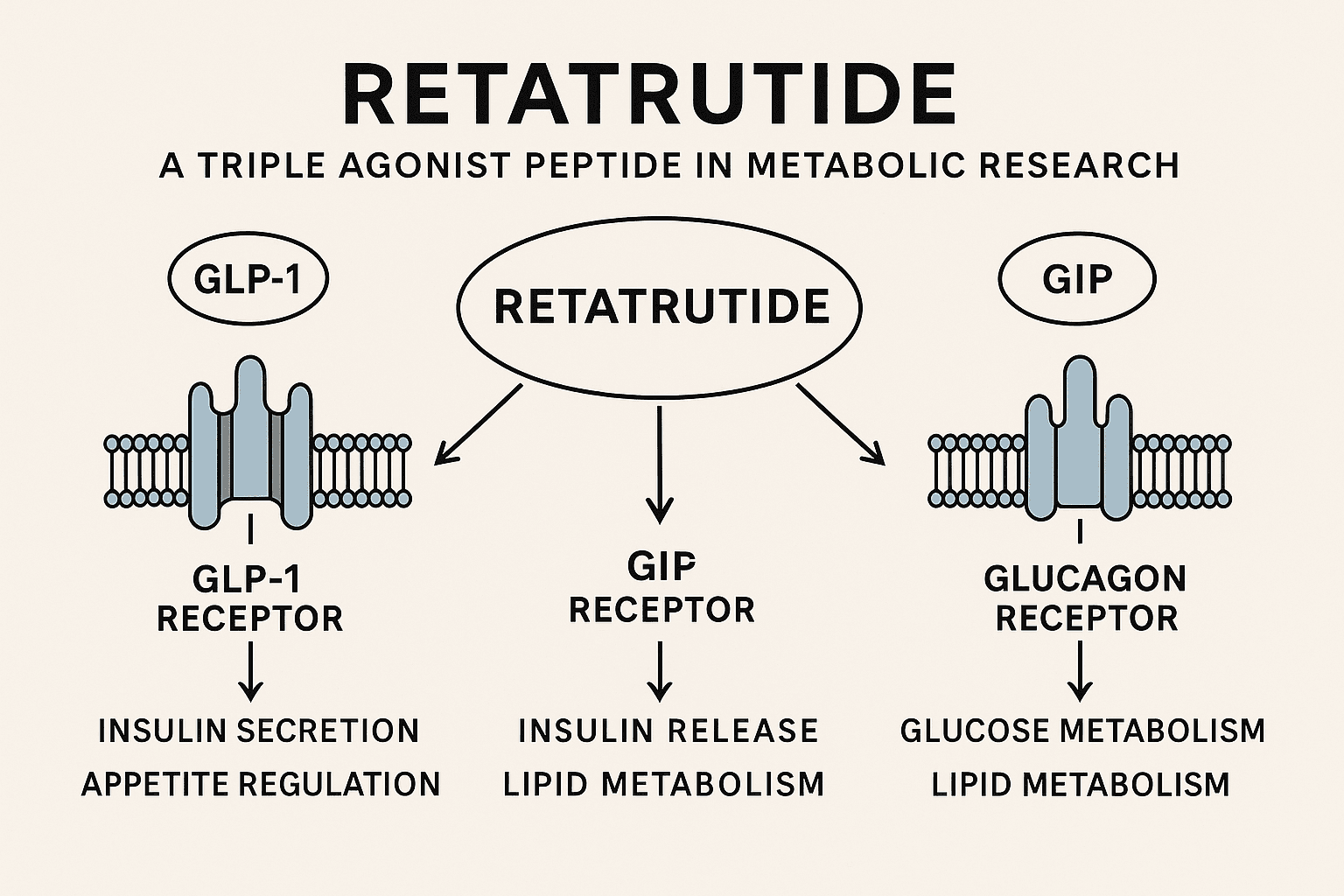Retatrutide: Exploring the Triple Agonist Peptide in Metabolic Research
In the evolving landscape of metabolic research, peptides play a pivotal role in unraveling complex physiological processes. Among these, Retatrutide has garnered attention for its unique properties. This blog delves into the characteristics of Retatrutide, its relevance in research, and considerations for sourcing.
Understanding Retatrutide
Retatrutide is a synthetic peptide known for its activity as a triple agonist, targeting the glucagon receptor (GCGR), glucose-dependent insulinotropic polypeptide receptor (GIPR), and glucagon-like peptide-1 receptor (GLP-1R). This tri-agonist profile positions it as a subject of interest in studies related to metabolic pathways.
Research Applications
Due to its multifaceted receptor activity, Retatrutide is utilized in various research contexts, including:
-
Energy Expenditure Studies: Investigating how activation of GCGR, GIPR, and GLP-1R influences energy balance.
-
Appetite Regulation: Exploring the peptide’s role in appetite control mechanisms.
-
Glucose Metabolism: Assessing its impact on glucose homeostasis and related metabolic processes.
These applications underscore Retatrutide’s potential as a tool for advancing our understanding of metabolic functions.
Sourcing Retatrutide for Research
For researchers seeking Retatrutide, several considerations are paramount:
-
Purity: Ensure the peptide has a purity level of ≥99%, verified through appropriate analytical methods.
-
Form: Retatrutide is typically available as a lyophilized powder, requiring proper reconstitution.
-
Storage: Store the peptide at -20°C to maintain stability over time.
-
Supplier Credibility: Source from reputable suppliers who provide Certificates of Analysis (COAs) and adhere to quality standards.
These factors are crucial to ensure the reliability and reproducibility of research outcomes.
Compliance and Safety
It’s imperative to note that Retatrutide is intended strictly for laboratory research use. It is not approved for human or veterinary applications. Researchers must adhere to all applicable regulations and safety protocols when handling this compound.
Conclusion
Retatrutide stands out in metabolic research due to its unique triple agonist activity. By targeting GCGR, GIPR, and GLP-1R, it offers a multifaceted approach to studying energy balance, appetite regulation, and glucose metabolism. As research progresses, Retatrutide may provide deeper insights into metabolic processes, paving the way for future scientific advancements.
For laboratory research use only. Not for human or veterinary applications.


